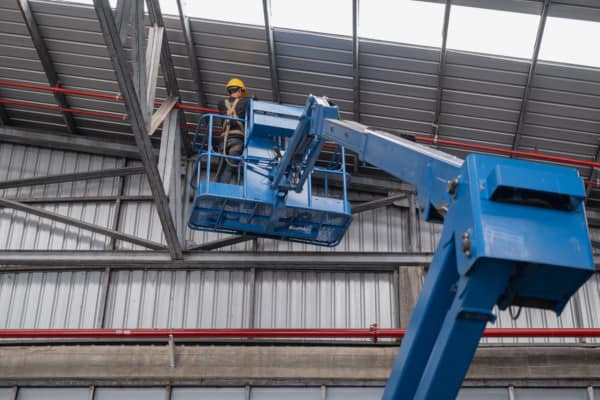Knowledge of state licensing requirements and industry certifications can reduce stress and improve outcomes when installing and maintaining fire protection systems
Building owners and their representatives often find they’ve inadvertently run afoul of fire code. Some issues—like stacks of boxes blocking sprinkler heads—are easily fixed. Others, like widespread corrosion, can be both very costly and difficult to repair. Many of these problems can be avoided, identified early, or quickly resolved by working with licensed and qualified standpipe and fire sprinkler contractors.
In this article, we explain when building owners need to hire qualified contractors for the inspection or installation of water-based systems including standpipes and fire sprinklers—and how to find people who are both licensed and eminently qualified. We help readers find their state’s licensing laws and show how certifications from NICET, a not-for-profit standards institute, can provide you with peace of mind—even when local licensing requirements are lax.
This article is one installment of a two-part series developed in partnership with Fire Tech Productions. You can read their article on NICET certification’s value for fire protection professionals here.
If you need equipment for your fire protection system, we invite you to view our selection of fire sprinklers and accessories, standpipe equipment, and piping materials.
When it comes to standpipe and fire sprinkler inspection, testing, maintenance, or installation, building owners bear responsibilities they may not fully understand
Building owners must keep water-based fire protection systems up to code. Some of those requirements are as simple as keeping aftermarket paint off of fire sprinklers. Other situations demand more rigorous internal inspections of piping, along with complex testing, specialized equipment, and serious repairs.
The exact requirements vary from state to state and, sometimes, from city to city. But the National Fire Protection Association (NFPA), a Massachusetts-based non-profit organization, has condensed the fire protection industry’s best practices for installation contractors and ITM (inspection, testing, and maintenance) professionals into several volumes of code. The most commonly used NFPA standards for water-based systems in commercial and large residential buildings include:
- ITM—NFPA 25: Standard for the Inspection, Testing, and Maintenance of Water-Based Fire Protection Systems
- Installation of commercial sprinkler systems—NFPA 13: Standard for the Installation of Sprinkler Systems
- Installation of sprinkler systems for multi-family residential buildings—NFPA 13R: Standard for the Installation of Sprinkler Systems in Low-Rise Residential Occupancies
- Installation of standpipe systems—NFPA 14: Standard for the Installation of Standpipe and Hose Systems
Virtually all American states have given some version of NFPA 13, NFPA 13R, NFPA 14, and NFPA 25 the force of law. These standards provide clear responsibilities and (for ITM) defined timelines for building owners and contractors. For an introduction to what NFPA 25 is—and what it requires—take a look at this video from the not-for-profit Northern Illinois Fire Sprinkler Advisory Board:
Owners and representatives should begin by determining which standpipe and fire sprinkler contractors can legally engage in installation and ITM
These NFPA standards aren’t clear on who, exactly, may work with a fire sprinkler or standpipe system. Installation of NFPA 13 and 13R sprinkler systems, for example, “require design and installation by knowledgeable and experienced personnel” (2019 edition, section 1.2.2.). NFPA 25 requires that those engaging in ITM be “qualified.” The NFPA 25 Handbook adds that some tasks may even be performed by a trained owner or their staff if local authorities allow it.
Ultimately, NFPA codes leave it to government bodies to decide who may be trained, permitted, or licensed to perform work on water-based systems. The NFPA 25 Handbook notes that “[b]efore performing any ITM work, any individual or business entity should contact the appropriate jurisdiction, such as the local or state fire marshal’s office or the state contractor’s licensing board, for any licensing requirements.”
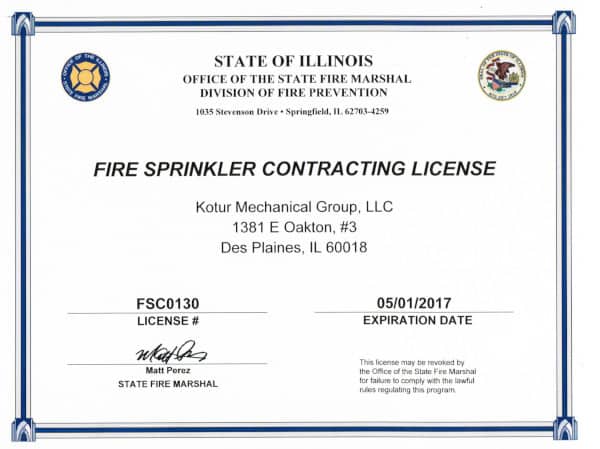
The table below—which provides a state-by-state listing of licensing authorities and informational resources—can help owners and their representatives take that first step.
Resources for Locating Licensed Standpipe and Fire Sprinkler Contractors by State (Updated September 2019)
|
|
| State | Licensing Authority or Informational Resource |
| Alabama | Alabama State Fire Marshal’s Office |
| Alaska | Fire and Life Safety at Alaska’s Department of Public Safety |
| Arizona | Arizona Registrar of Contractors (see licenses C-16, R-16, and CR-16) |
| Arkansas | Arkansas Fire Protection Licensing Board |
| California | California State Fire Marshal’s Office (license lookup at California’s Department of Consumer Affairs) |
| Colorado | Colorado Division of Fire Safety |
| Connecticut | Connecticut State Department of Consumer Protection |
| Delaware | Delaware State Fire Marshal’s Office |
| Florida | Florida State Fire Marshal’s Office |
| Georgia | Georgia Office of Insurance and Safety Fire Commissioner |
| Hawaii | Rules at Hawaii State Fire Council; licenses (certificates of fitness) issued by county-level fire departments |
| Idaho | Idaho State Fire Marshal’s Office |
| Illinois | Office of the Illinois State Fire Marshal |
| Indiana | State code requires design professionals for installation and alteration of fire protection systems in select buildings (see Article 12, section 12-6-9); fire protection licenses may be issued at the city level |
| Iowa | Iowa State Fire Marshall Division; licensing lookup available through the division’s public portal |
| Kansas | Kansas does not issue licenses to fire sprinkler companies currently; visit Kansas Office of the State Fire Marshal for more information |
| Kentucky | Kentucky Office of the State Fire Marshal; license lookup available through the Department of Housing, Buildings, and Construction |
| Louisiana | Louisiana Office of the State Fire Marshal |
| Maine | Maine Office of State Fire Marshal |
| Maryland | Maryland State Fire Marshal (Maryland Licensed Sprinkler Contractors) |
| Massachusetts | Licensing lookup available through Massachusetts’ Department of Fire Services; requirements for sprinklerfitters available at the Division of Professional Licensure |
| Michigan | Michigan Licensing and Regulatory Affairs |
| Minnesota | Minnesota State Fire Marshal |
| Mississippi | Licenses may be searched through the Mississippi Board of Contractors; more information available through the Mississippi Insurance Department |
| Missouri | Missouri’s Division of Fire Safety states that inspections are required “[i]f you are in a community that has adopted a fire code or your licensed facility requires compliance with fire safety rules” and that such work must be performed by qualified contractors. For questions, call (573) 751-2930 |
| Montana | Fire protection licenses may be searched at the Montana Department of Labor and Industry; more information available at the Montana Fire Protection License Program |
| Nebraska | Nebraska State Fire Marshal maintains a list of qualified sprinkler companies; rules regarding licensing for water-based systems available through the Nebraska Secretary of State |
| New Hampshire | New Hampshire Division of Fire Safety |
| New Jersey | Licensing information available at the New Jersey Department of Community Affairs (listing available under “permitted contractors”) |
| New Mexico | New Mexico State Fire Marshal (see “certificate of fitness list of approved obtainers”) |
| New York | Few state-level licenses are issued; contact county or city officials for more information |
| Nevada | Nevada State Fire Marshal |
| North Carolina | North Carolina State Board of Examiners of Plumbing, Heating and Fire Sprinkler Contractors |
| North Dakota | Licensed contractors may be looked up through the North Dakota Secretary of State |
| Ohio | Individual and contractor licenses may be searched through Ohio’s License Lookup; more information may be available through the Division of State Fire Marshal |
| Oklahoma | Contractors licensed by the Ohio Department of Labor |
| Oregon | Oregon Office of the State Fire Marshal |
| Pennsylvania | Pennsylvania offers few state-level licenses to contractors of any type; more information about state and local laws may be available through the Pennsylvania Office of the State Fire Commissioner |
| Rhode Island | The Rhode Island Department of Labor and Training licenses “master fire protection sprinkler contractors” and pipefitters in fire protection |
| South Carolina | Requirements for sprinkler contractors are available through the South Carolina Contractor’s Licensing Board |
| South Dakota | South Dakota offers few state-level licenses; contact local fire authorities for more information |
| Tennessee | Tennessee State Fire Marshal’s Office; more licensing information available at the Tennessee Department of Commerce and Insurance |
| Texas | Texas State Fire Marshal |
| Utah | Utah State Fire Marshal’s Office |
| Vermont | Vermont Division of Fire Safety |
| Virginia | Fire protection contractors may note their “specialty” on their licenses with the Board for Contractors; their Department of Professional and Occupational Regulation provides additional rules. |
| Washington State | Washington State Fire Marshal’s Office |
| Washington, D.C. | Washington D.C.’s Office of the Fire Marshal |
| Wisconsin | Requirements described at Wisconsin’s Department of Safety and Professional Services; licensee lookup available through their credential/license search |
| West Virginia | West Virginia’s Office of the State Fire Marshal |
| Wyoming | Contact local fire authorities for more information on licensing requirements and verification |
NICET certification stands out as a way to earn a license and demonstrate expertise in standpipe and fire sprinkler inspection or installation
State and local licensing authorities may use a variety of metrics to vet potential standpipe and fire sprinkler contractors, including:
- Verified work experience
- Written tests on state or local fire codes, NFPA standards, and theory
- Apprenticeship programs and certifications through the UA (United Association), NITC (National Inspection Testing and Certification Corporation), and other industry groups
- The NFPA’s Certified Fire Protection Specialist (CFPS) credential
- Professional engineering degree or license
- NICET (National Institute for Certification in Engineering Technologies) certifications
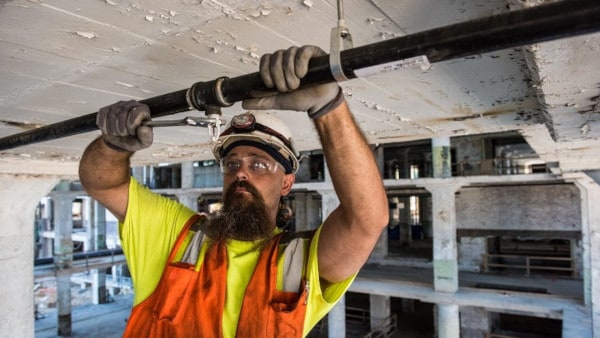
But even with licensing, gaps can remain between who’s licensed and who’s truly qualified or excellent at their work. NICET certification is perhaps the most widely accepted way for contractors and their employees to demonstrate an extra level of competency.
For example, Johnson Controls, a global corporation with more than 100,000 tradesmen and fire professionals, prefers or requires NICET certification across the board, both for novice and experienced sprinkler fitters.
And they’re not alone: companies in New York, Texas, Oregon, and elsewhere express a preference for NICET certification in their job descriptions. Even the General Services Administration (GSA), which leases and owns space for more than one million federal employees and contractors, requires ITM technicians to be NICET-certified.
Quality vetting, testing, and training form the backbone of NICET certification
For standpipe and fire sprinkler contractors, two NICET certifications are particularly important:
- Water-based systems layout—for engineering professionals specializing in the layout and detailing of code-compliant systems
- Inspection and testing of water-based systems—for technicians who inspect and maintain existing systems
These credentials are tiered, differentiating between workers with some job experience and knowledge (Level I), more experienced people still requiring daily supervision (Level II), those who can work independently (Level III), and—for the layout certification—senior-level technicians (Level IV).
Driving NICET’s popularity is its rigor: NICET demands detailed descriptions of applicants’ technical work. Recommenders write letters ranking an applicant’s technical abilities, client relationships, leadership skills, and ethics. Verifiers attest to specific skills, including “soft” communication skills and the successful performance of specific tasks.
For layout professionals, NICET certification also confirms that the candidate has “repeatedly demonstrated” the ability to “evaluate contract documents for feasibility and potential liabilities,” “identify the costs and benefits of system design options,” and “negotiate a compromise among project stakeholders who have conflicting requirements.”
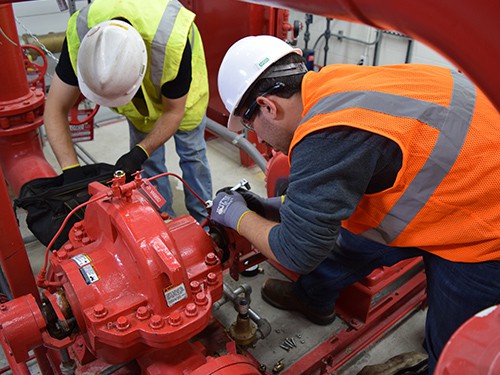
There’s more to the story here: continuing education, extensive multiple-choice testing, and other requirements stand between applicants and certification. But the result is that contractors who embrace NICET have the knowledge and experience to reduce the risks facing building owners.
The right contractor should be licensed, certified, and properly vetted
We’d like to close out this article with a few more best practices—and some informational resources—designed to help readers put this information together in a useful way. When starting your search for a standpipe or fire sprinkler inspection or installation contractor:
- Start from your state’s list of licensed fire protection contractors. Many of the resources mentioned in the state-by-state table above contain complete rosters of license-holding contractors.
- Take a look at registries run by industry groups. Members of the American Fire Sprinkler Association (AFSA) and the National Fire Sprinkler Association (NFSA) strive to keep member contractors up to date on developments in fire code and manufacturing trends. Both maintain searchable databases of their members, which can come in handy when a state- or city-level listing of approved contractors isn’t forthcoming. See the AFSA’s “Find a Member” search or the NFSA’s “Find an NFSA Contractor” directory for recommendations.
- Vet standpipe and fire sprinkler contractors just as you would any other professional. Licensing requirements vary from state to state. But all contractors should be bonded, insured, and legally approved to work in the state. Good references, few (if any) legal disputes, and years of experience matter, too.
- Ask contractors if their staff members hold NICET certifications. This information can be verified with NICET’s online lookup or through their directory of certificants. It may also be worth asking whether NICET certification was completed with a recognized training provider.
Organizations like Fire Tech Productions agree to avoid the pitfalls that can diminish the value of a certification. Trainers must abide by a code of ethics, including an agreement not to “teach to the test.” They also commit to familiarizing students with the broad range of tasks they’ll face on the job. Be sure to read Fire Tech’s post on the value of NICET certification for fire protection professionals.
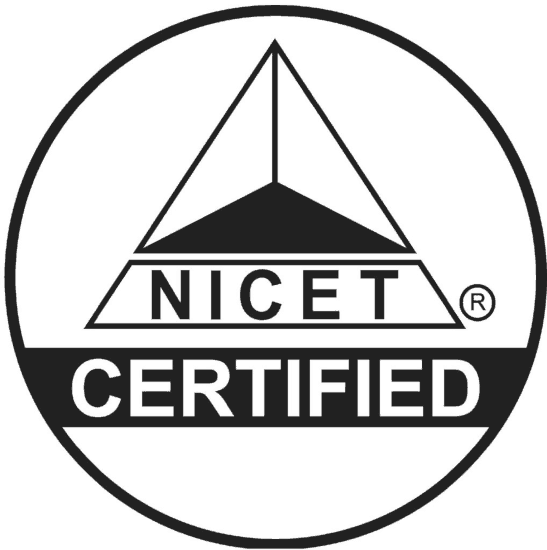
If this information helped you find a qualified contractor, we invite you to read more at blog.qrfs.com—and to check us out at Facebook.com/QuickResponseFireSupply or on Twitter @QuickResponseFS.
If you need equipment for your fire protection system, we invite you to view QRFS’s wide selection of fire sprinklers and accessories, standpipe equipment, and piping materials. For more information, call us at +1 (888) 361-6662 or email support@qrfs.com.


